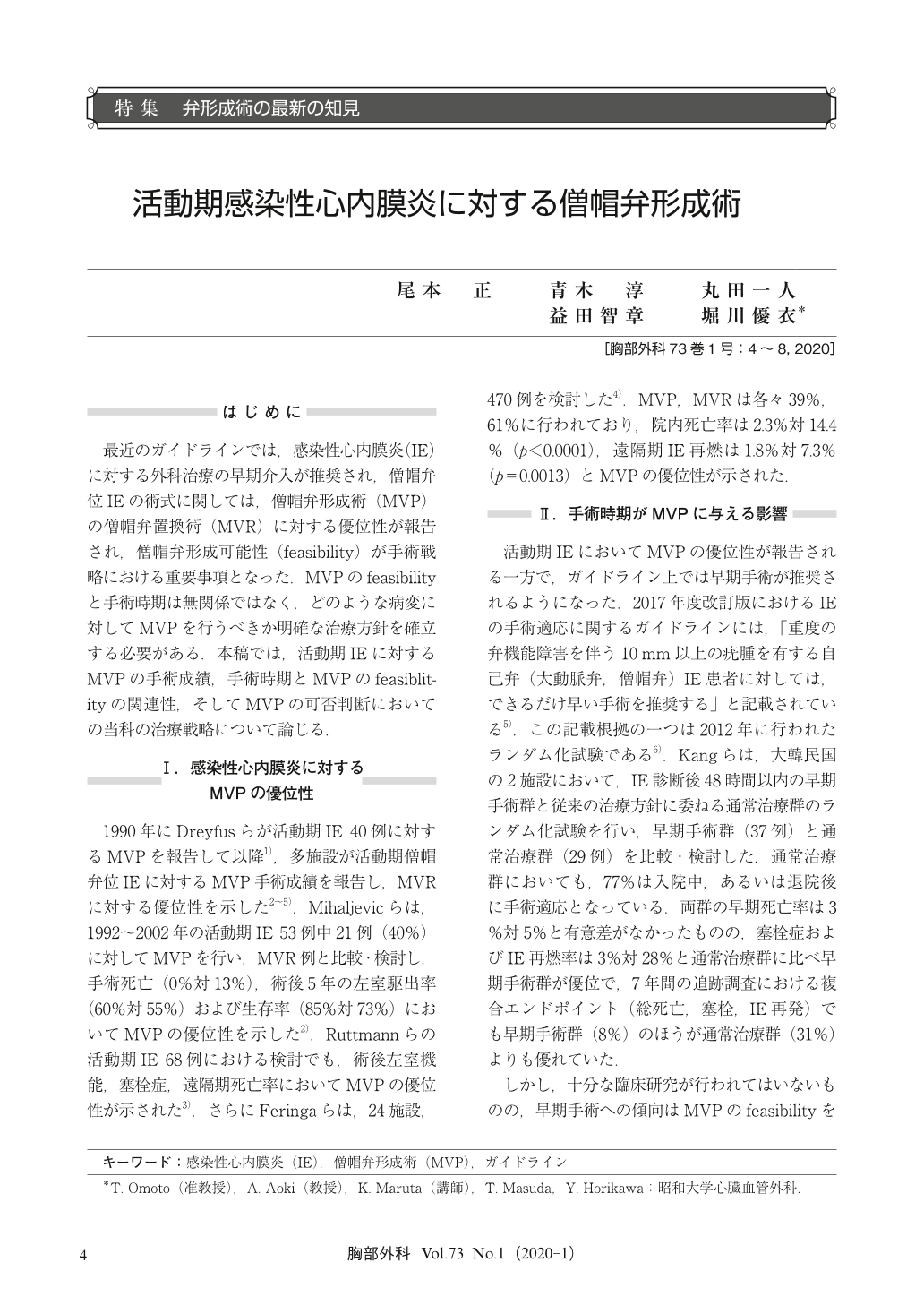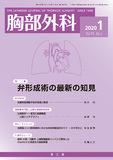Japanese
English
- 有料閲覧
- Abstract 文献概要
- 1ページ目 Look Inside
- 参考文献 Reference
- サイト内被引用 Cited by
最近のガイドラインでは,感染性心内膜炎(IE)に対する外科治療の早期介入が推奨され,僧帽弁位IEの術式に関しては,僧帽弁形成術(MVP)の僧帽弁置換術(MVR)に対する優位性が報告され,僧帽弁形成可能性(feasibility)が手術戦略における重要事項となった.MVPのfeasibilityと手術時期は無関係ではなく,どのような病変に対してMVPを行うべきか明確な治療方針を確立する必要がある.本稿では,活動期IEに対するMVPの手術成績,手術時期とMVPのfeasiblitityの関連性,そしてMVPの可否判断においての当科の治療戦略について論じる.
According to the current guideline, early surgery is recommended in patients with infective endocarditis (IE). On the other hand, mitral valve plasty (MVP) became the preferred surgical option in patients with IE, because of its benefits in the preservation of left ventricular function and prevention of recurrence of infection. Feasibility of MVP is an important issue in surgical strategy, however, it might be associated with the timing of the operation:feasibility of MVP might be higher in healed IE than active IE, although there had been no clear evidence in previous studies. In order to develop scoring system to predict feasibility of MVP in patients with active IE, we have introduced “severity score”.Severity score defined as the sum of valvular score which evaluates the extensiveness of the valvular destruction, and technical score which evaluates the complexity and durability of the repair. Probability of feasible MVP was high in severity score≦7 points and low in severity score≧9 points. MVP is basically selected in patients with severity score of 8 points, taking the benefit of patients and risks of long-term durability into consideration. We believe that severity score is valuable and reproducible scoring system in surgical decision making.

© Nankodo Co., Ltd., 2020


